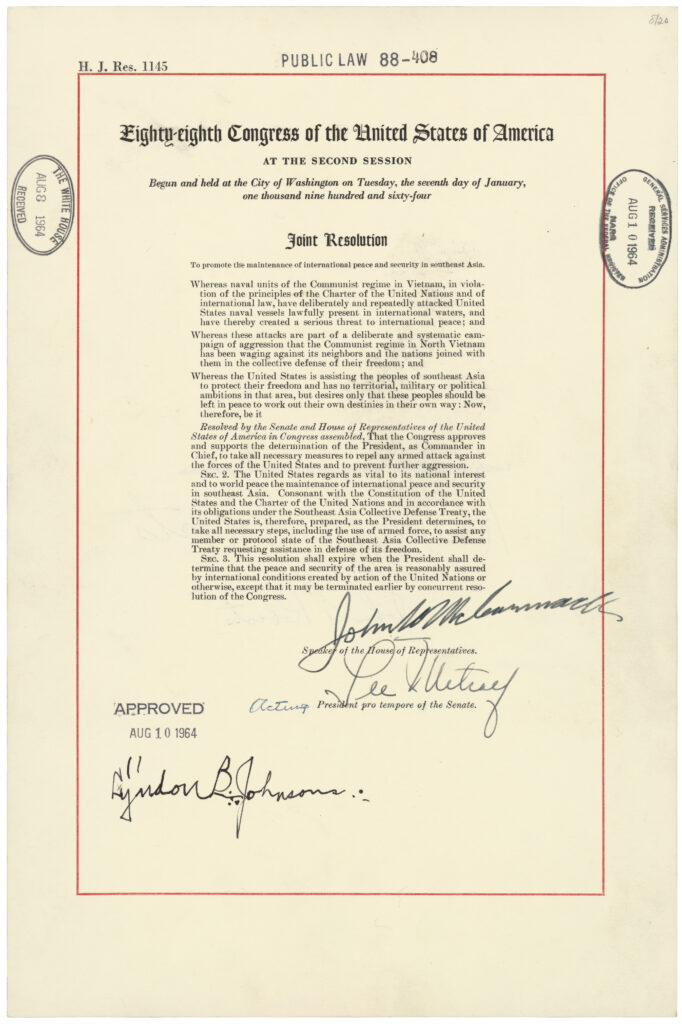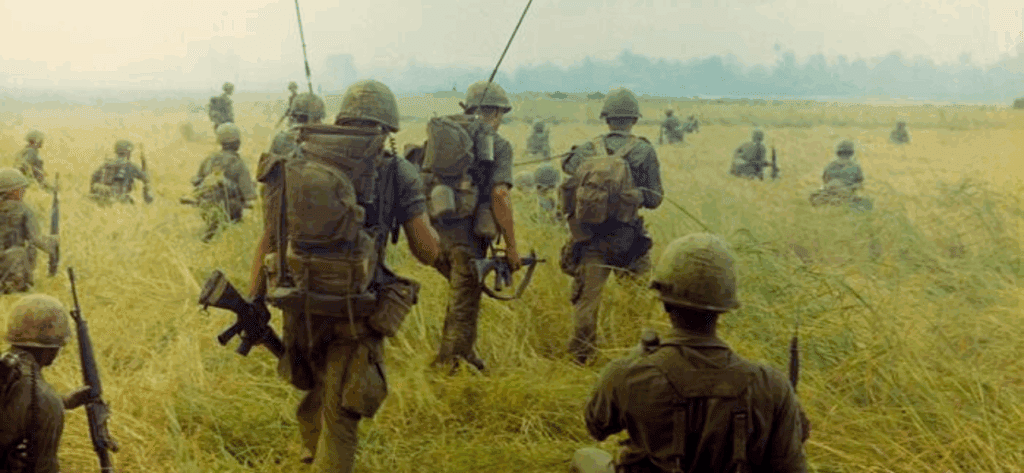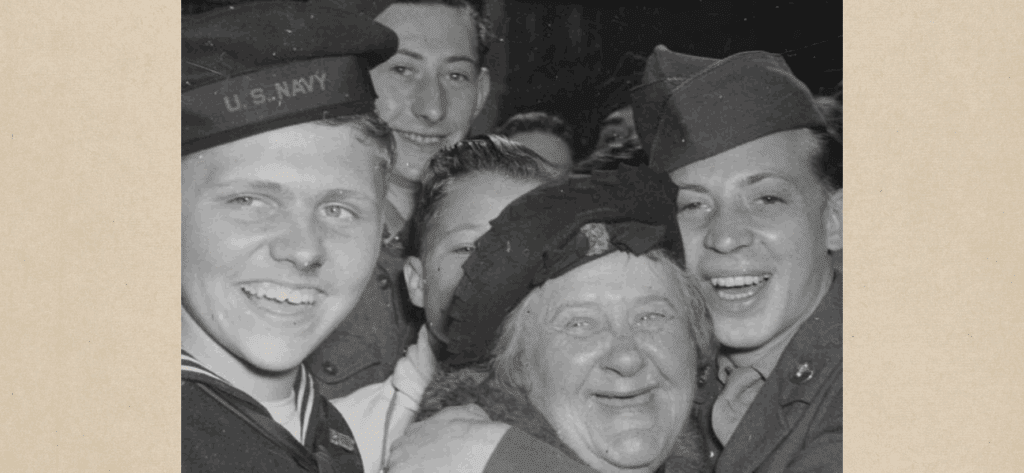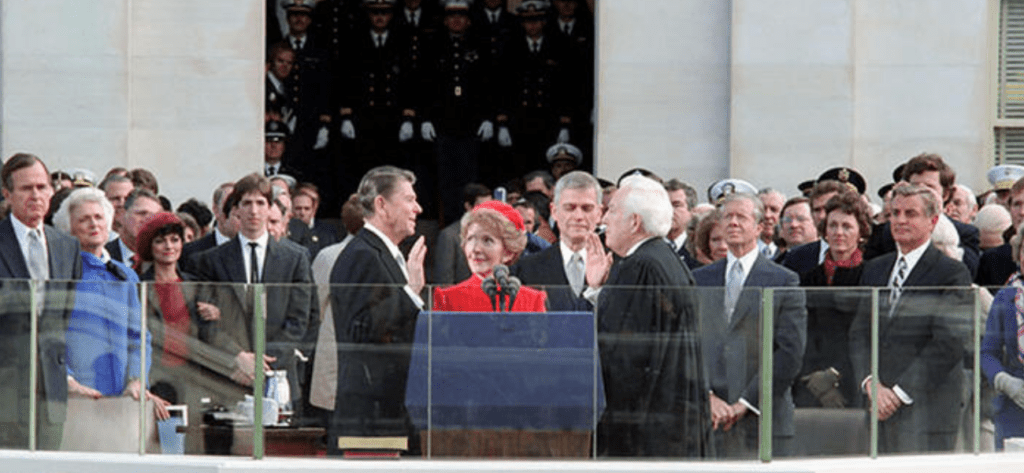By 1964, Vietnam had been torn by international and civil war for decades. U.S. military support for South Vietnam had grown to some 15,000 military advisers, while the North received military and financial aid from China and the Soviet Union.
In a late-night televised address on August 4, 1964, President Johnson announced that he had ordered retaliatory air strikes on the North Vietnamese in response to reports of their attacks earlier on U.S. naval ships in the Gulf of Tonkin. He asked Congress to pass a resolution stressing that “our Government is united in its determination to take all necessary measures in support of freedom and in defense of peace in southeast Asia.”
The resolution passed quickly on August 7, with only two dissenting votes in the Senate. It stated that “Congress approves and supports the determination of the President, as Commander in Chief, to take all necessary measures to repel any armed attack against the forces of the United States and to prevent further aggression.”
The resolution became the subject of great political controversy in the course of the undeclared war that followed. As public resistance to the war grew, Congress eventually repealed the resolution in January 1971. More than 58,000 U.S. military personnel were killed in the war.

This document was on display in the “Featured Documents” exhibit in the Rotunda Galleries of the National Archives in Washington, DC, July 15 through August 7, 2014.
The National Archives Museum’s “Featured Documents” exhibit is made possible in part by the Foundation for the National Archives through the generous support of Toyota.




